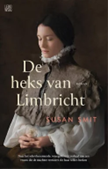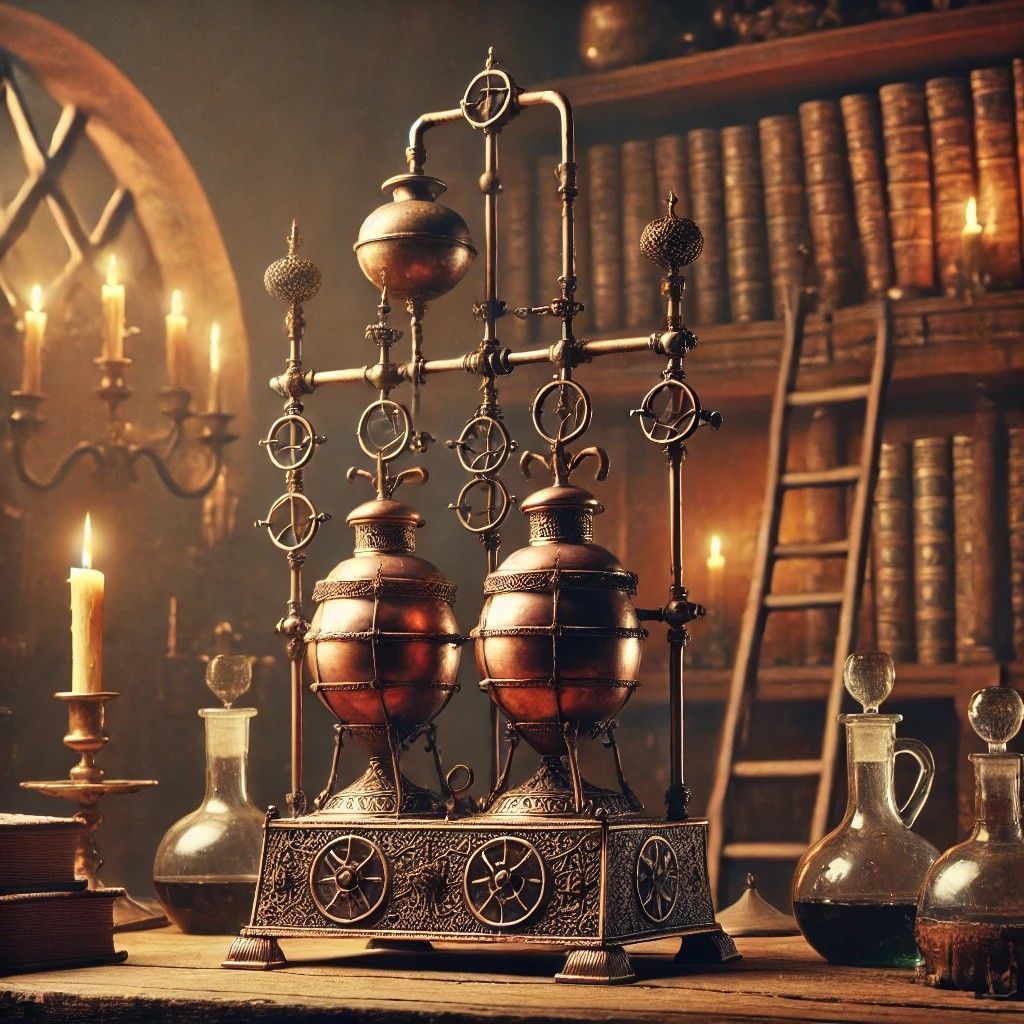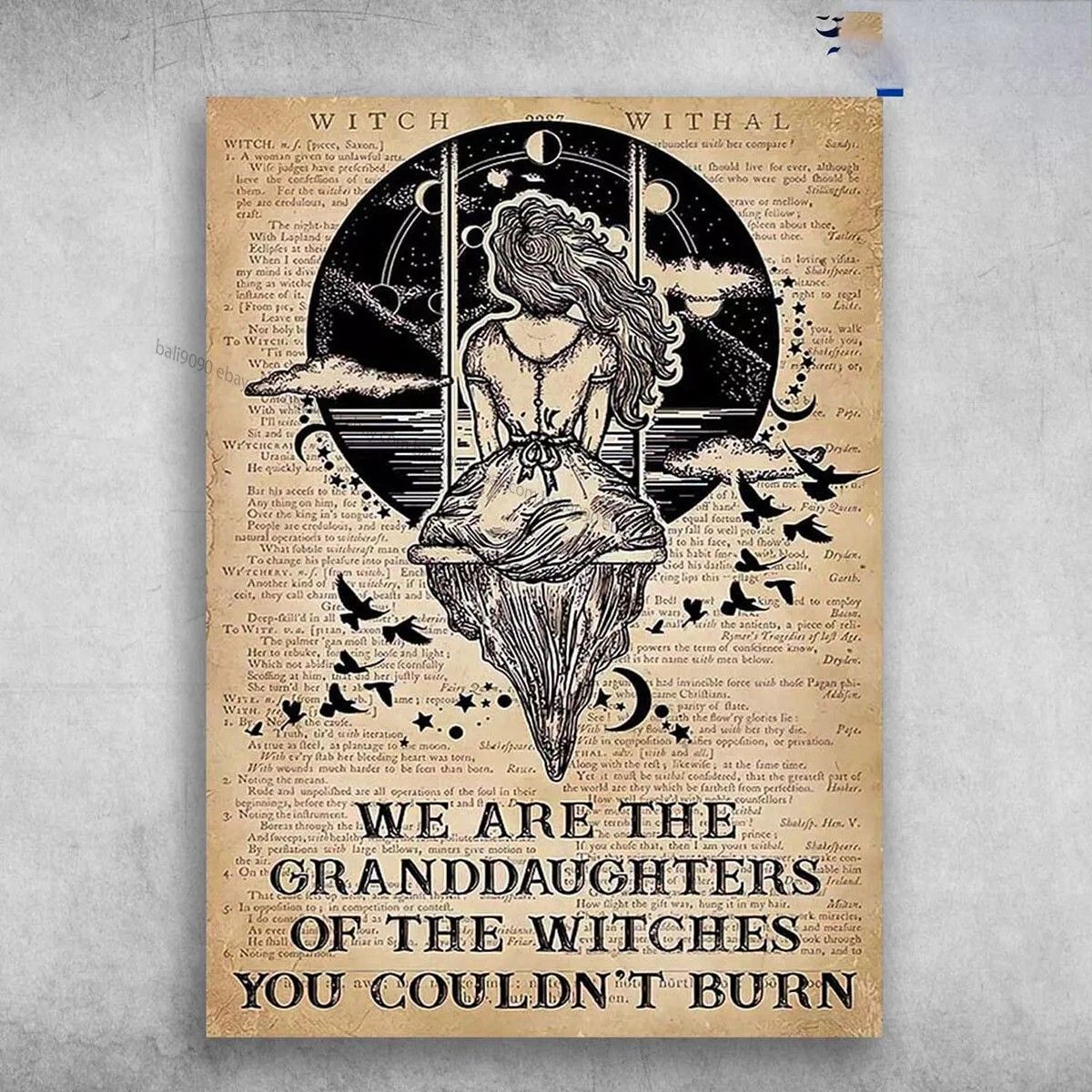THE WITCH IN ME/ THE WISE ONE
Witchcraft was abolished in 1736, when the Witchcraft Act was passed. This act made it a criminal offence to accuse others of witchcraft. At the same time, the act prohibited the practice of occultism, with a possible penalty of a year in prison.
Throughout history, the last convictions for witchcraft were pronounced:
• In 1682, the last woman in England was convicted as a witch.
• The last conviction in Scotland took place in 1722.
• In 1745, the last woman was convicted in France.
• The last witch conviction in Switzerland took place in 1782.
• In the Netherlands, Entgen Luyten, the witch of Limbrich, was the last to be accused of witchcraft.

It is remarkable that people were persecuted for their deeply intuitive gifts. This shows how strongly this fear is rooted in the collective consciousness. Ironically, the Vatican has a huge collection of occult books and objects. Many wealthy rulers had their own fortune tellers, astrologers and used herbs. Also think of the use of incense in churches.
King George rewrote the Bible and adapted it to his own vision. However, he also wrote memoirs about demons and how to summon them. Society expected you to blend in and suppress your magical powers.
The saying "Know thyself" is not without reason an important statement within Freemasonry. Occultism—all that is hidden—has its origins in movements such as the Rosicrucians, Freemasonry and the Hermetic Order of the Golden Dawn. These groups reject dogma, but do believe in a higher master.
The statement “We are the granddaughters of the witches you couldn't burn” is a powerful spiritual slogan that references the historical persecution of women, particularly during the witch hunts, and how women today are regaining their strength, wisdom and independence.
MEANING and ORIGIN
This phrase is often used within spiritual communities to honor the power of women who were once oppressed, marginalized, or destroyed for their independence, knowledge, and strength. While the exact origins of the phrase are unclear, it was popularized by feminist writers and activists. It expresses a sense of heritage and connection to women of the past who resisted patriarchal oppression.
HISTORICAL CONTEXT
In the Middle Ages and early modern period, women who distinguished themselves through knowledge of herbs, healing, or simply being independent were often accused of witchcraft. These accusations led to persecution, torture, and the death penalty, often by burning. The slogan refers to the idea that not all women could be destroyed, and that the power of those women lives on in their descendants.
SPIRITUAL and MAGICAL MEANING
For many within spiritual or pagan communities, the slogan also has a deeper meaning. It acknowledges the spiritual lineage of women who were connected to nature, medicine, rituals and intuitive knowledge. The current generation often feels drawn to ancient spiritual practices as a way to recover this wisdom.
MODERN APPLICATION
This statement is seen on protest signs, clothing and artwork, especially during feminist marches and events. It serves as a powerful symbol of resistance to patriarchal structures and a call to embrace the power of feminine energy.
CRITICISM and REFLECTION
While the slogan is powerful, it has also attracted some criticism. Some point out that most women accused of being witches were often not practicing actual witchcraft, but were victims of social, religious or political oppression. Others argue that the slogan romanticizes or simplifies the past.
The statement “We are the granddaughters of the witches you couldn’t burn” is a powerful tribute to the feminine power that has endured throughout the ages. It is a call to not only acknowledge the pain of the past, but to heal, grow and fight from that power for equality, freedom and self-expression.
Personal note
I felt a deep connection with the women who came before me—women who were disbelieved, vilified by men, and burned at the stake. In those days, it was terrifyingly easy to accuse a woman of witchcraft. Free thought was not accepted, let alone a fair trial. A simple accusation was enough, whether it was out of jealousy, spite, or simply because a man wanted to get rid of his wife or mistress.
Women were often tortured to force them to point out others. If you refused, it meant death. If you followed their orders, you dragged another woman into the same sorrow. These were women who stood in their power, deeply connected to the wisdom within themselves, to Mother Earth and nature. These women lived with love and attention, and that was reflected in their surroundings: their gardens bloomed, their animals flourished. This natural harmony aroused jealousy in those who lacked this connection.
Thus began the relentless hunt for women. The feminine had to be suppressed: the connecting force, the creative energy, but above all the ability to feel and heal. It has left deep wounds in the collective female consciousness. To this day, many women still feel distrust, jealousy and rivalry. We begrudge each other, pull each other down, instead of supporting each other.
I came to a painful realization: I felt what it was like to be burned at the stake. I saw the entire village pointing at me. I felt the deep betrayal in every fiber of my being—pregnant and vulnerable, as the flames enveloped me. My lover watched and said nothing. He chose comfort, the lie, clinging to the safe illusion of the 3D world. His silence was a betrayal, deep and painful. I could do nothing, say nothing, only watch helplessly as the love of my life sacrificed me for money and prestige.
The Rosicrucians are a mysterious and esoteric movement that is deeply rooted in spiritual traditions and hidden knowledge. They combine elements of Christianity, alchemy, hermeticism, gnosticism, astrology and kabbalah. An important aspect of their teaching is the symbolism of the two pillars at each temple, which refer to the temple of Solomon. This symbolizes the connection between the spiritual and material world, and is often associated with the magic of Solomon.
The mythical figure Christian Rosencreutz, who is said to have been born in 1378, is considered the founder of the Rosicrucian Order. Whether he actually existed remains a mystery. According to legend, his family was murdered by a German lord, after which he was taken away by a monk as a five-year-old boy and placed in a monastery. There he was taught historical knowledge and later sent to Arab countries to delve further into hidden wisdom and the elementary teachings. After his return, he spread his acquired knowledge and became a source of inspiration for spiritual seekers.
The Rosicrucians are also said to have been influenced by figures such as Aleister Crowley, a controversial founder of modern Western magic and vice versa. Although Crowley is considered a controversial figure personally, he had a great deal of knowledge of ancient magical traditions, including the connection to the Egyptian god Horus. Interestingly, his wife managed to make a deeper connection to the unconscious world, which made Crowley jealous. His need for control and power eventually led to conflict within the Golden Dawn, an esoteric society from which he was expelled.
The history of alchemy shows that women have always played an essential role in spiritual and magical traditions. The first known alchemist was a woman named Mary the Jewess also known as Mary the Alchemist or Mary Hebraea, was one of the earliest and most influential alchemists in history. She probably lived between the 1st and 3rd centuries AD in Alexandria, Egypt. Mary is often considered the first female alchemist and a pioneer in the fields of chemistry and laboratory techniques.
Contributions to Alchemy
Mary the Jewess was known for her inventions of alchemical equipment, including:
• The Bain-Marie (Au Bain-Marie): A technique in which a pan of water is used to heat delicate substances slowly and evenly. This method is still used today in cooking and chemistry.
• The Double Boiler: A distillation apparatus consisting of two vessels, used for purifying liquids.
• The Tribikos: An apparatus for distilling substances through three outlets, which helped in separating different components.
Spiritual and Philosophical Influences
Maria the Jewess was not only practical, but also philosophical. Her work revolved around the transformation of materials, which also symbolized inner spiritual transformation. This idea strongly influenced alchemy and is in line with the teachings of the Rosicrucians, who consider spiritual purification an essential process.
Connection with the Rosicrucians
The Rosicrucians saw in Mary the Jewess an important example of how feminine wisdom and intuition play a crucial role in the search for hidden knowledge. Her work laid the foundation for later alchemical and esoteric traditions in which both men and women contribute to spiritual growth.
. Women are naturally seen as oracles, with an innate ability to connect with both the seen and unseen worlds. The masculine and feminine are meant to work together, complementing each other and striving together for spiritual growth and balance.
This complementary interplay between male and female is also reflected in the relationship between Jesus and Mary Magdalene. They are often seen as embodiments of the divine male and female energies. This powerful combination shows how important the balance of both forces is for spiritual development and creation.
The Rosicrucians and their teachings remain a source of inspiration and mystery to this day, with the search for inner wisdom and universal truth at its core.

THE WITCH IN ME
• Represents the archetypal figure of the old wise woman or crone, a woman full of life experience and inner wisdom.
• This archetype is associated with deep life knowledge, compassion and spiritual insights.
• She also represents the idea of female mentorship, healing and transmission of knowledge.
• In many cultures, the wise woman plays a role as a healer, counselor, or spiritual guide.
Both archetypes invite you to embrace different aspects of being a woman, from strength and rebellion to serenity and wisdom.
The witch in me awoke like a whisper from ancient times. A deep fascination for herbs grew inside me, like roots entwining with the earth. The urge to create a vegetable garden became a calling, a place where nature revealed its secrets to me. Scents of oils filled my space, heavy and comforting, while sage accompanied my prayers. Incense curled upward, candles flickered like ancient stars, and stacks of paper carried my words like ancient spells.
In those moments I was carried to higher spheres, where the soft presence of Mary Magdalene danced around me. She whispered forgotten wisdoms, and beside her stood goddesses in silence. Isis, with her veil of mystery, was equally familiar to me. They were all mirrors of power, reminding me of the fire that burned deep within me.




